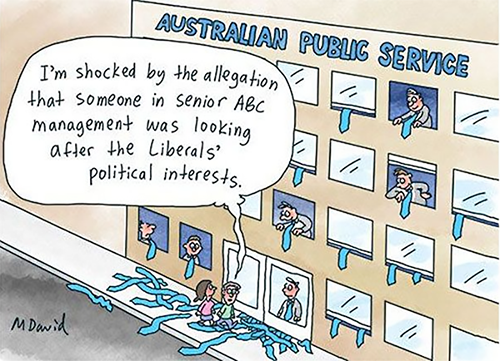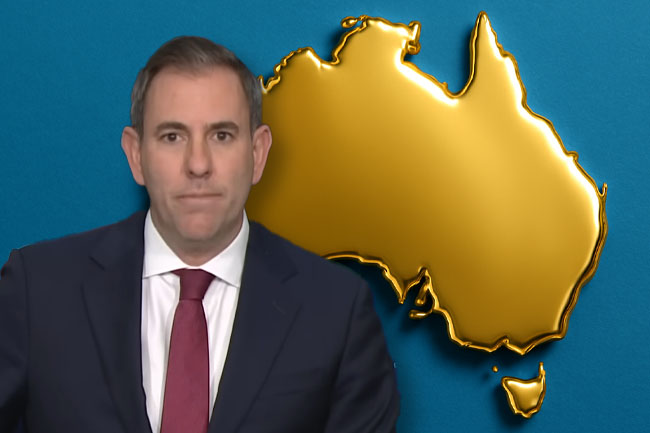The contrast between Labor and the Coalition on housing policy continues to widen, as Alan Austin reports.
ON THE DAY Federal Treasurer Jim Chalmers made significant pronouncements on the future of housing, the Australian Bureau of Statistics (ABS) provided a new dataset to assist in tracking progress.
The Treasurer announced last Wednesday that building more accommodation ‘is one of the Albanese Government’s highest priorities’ and that his ambitious Homes for Australia plan will include ‘the biggest home building program of any government in history’.
Also on Wednesday, the ABS released a file titled ‘Lending Indicators’ which will detail new housing investment each quarter, with a lag of only about ten weeks. These are generally positive developments and reflect well on the Albanese Government. Hence, predictably, the mainstream newsrooms refused to pay them much attention. Fortunately, the alternative media will.
Steady rise in investment
The new ABS document shows 83,206 new home loans were approved in the 2024 December quarter, 3,229 more than a year earlier.
Total loan approvals reached $87.2 billion, the highest since the 2022 March quarter. See chart below.

ABS head of finance statistics, Dr Mish Tan, said:
“Demand for new home loans excluding refinancing rose throughout 2024, despite relatively strong growth in property prices. The value of new home loans during the 2024 calendar year reached $205.7 billion. This was 13.6% higher than the $181.0 billion value of new loans in 2023.”
Curious home loans trajectory
The chart above reveals three phases. The first is from 2017 onwards, under the Coalition, when housing loans steadily declined as the economy deteriorated and the majority of Australians became progressively poorer. This was the fundamental cause of the subsequent cost of living crisis — the inability of the Coalition to manage any aspect of the economy satisfactorily.
Then came the disastrous global COVID pandemic, which required all governments, including Australia’s, to respond with rapid economic stimulus. Unlike Australia’s response to the 2008 Global Financial Crisis, which was universally hailed as the world’s best, the Coalition’s 2020 strategy was arguably the world’s worst.
Instead of directly assisting families and targeting spending to build assets in communities nationwide, as in 2009 and 2010, the Coalition allowed corporations to grab virtually whatever cash they wanted, no questions asked.
Instead of adding $91.7 billion to the gross debt in two years, as in 2009 and 2010, the Coalition added a staggering $275.0 billion in 2020 and 2021.
Labor succeeded in staving off recession, alone in the developed world with Poland. The Coalition delivered Australia’s deepest recession on record.
The Coalition’s free money fiasco
In an appalling folly, the Reserve Bank handed almost $200 billion to the big banks to lend to customers at unsustainably low interest rates. This enabled far too many wannabe homeowners to take out loans that they could service in 2021, but couldn’t when interest rates returned to normal, between 3% and 5%, which inevitably happened in 2023. See the shaded area in the above graph.
The consequences were disastrous. House prices soared, rents increased and inflation surged. Then many families lost their homes and their deposits when they defaulted, and thousands of the small construction businesses started up with free money went broke, as shown by the spike in bankruptcies since 2022.
The positive period
The third stage evident in the above chart is the last seven quarters of steady rise in housing investment under Labor.
To sustain this, the Treasurer announced on Wednesday that he has urged the Prudential Regulation Authority (APRA) to allow more units to be built by removing regulations requiring that a percentage of new units must be pre-sold.
Chalmers has also persuaded the regulators and the banks to allow families with residual student debt to take out mortgages. His argument, which the banks have accepted, is that education debts differ from other liabilities in that they entail less risk, repayments depend on income, and instalments are paused when workers are between jobs. Hence they ought not be an automatic barrier to buying a home.
Then on Sunday, Chalmers announced a two-year ban on foreigners buying existing homes which may eventually become permanent. More initiatives can be expected shortly.
As we saw last week, housing costs fell in the ABS quarterly CPI calculations for the final two quarters of last year, reflecting lower house prices in many regions.
Rents are still rising, but more slowly than in the past. Interest rates are expected to be lowered this week.
All this suggests Labor will gladly choose housing as an election issue.
The long history of Coalition failure
During the Howard years, the new goods and services tax was supposed to replace the myriad indirect taxes levied by all governments. One glaring failure was that state governments were still free to levy stamp duties on property sales, thus burdening home buyers unnecessarily.
Worse, the Howard Government in 1999 changed tax rules to allow investors in property and other assets to be taxed on only half the capital gain, if sold after 12 months or longer. This advantaged investors and speculators over young home buyers.
Since then, the Coalition has blocked capital gains tax and negative gearing reform which would have curbed house price hikes, failed to train Australians or attract skilled immigrant workers for the construction industry, refused to build adequate social housing and cut assistance to low-income renters.
In fact, virtually all of Australia’s preventable housing problems are the direct result of Coalition decisions.
We shall soon see if the Greens or the Teal Independents raise housing as a wedge issue in the forthcoming election. And we shall see what specific policies all sides eventually propose.
At least the Stats Bureau has made evaluation much easier.
Alan Austin is an Independent Australia columnist and freelance journalist. You can follow him on Twitter @alanaustin001.
 This work is licensed under a Creative Commons Attribution-NonCommercial-NoDerivs 3.0 Australia License
This work is licensed under a Creative Commons Attribution-NonCommercial-NoDerivs 3.0 Australia License
Support independent journalism Subscribe to IA.

Related Articles
- Housing wars: Strata owners vs owners corporations
- The Dom Pérignon buyers' scheme
- 'Insiders' ignores hard facts of housing crisis
- Housing crisis worsened by media fearmongering
- Dirty little housing crisis secrets hidden by the mainstream media













